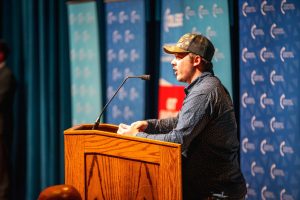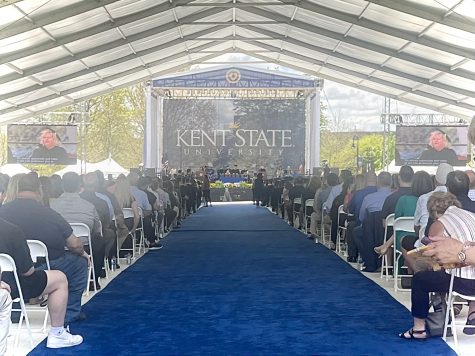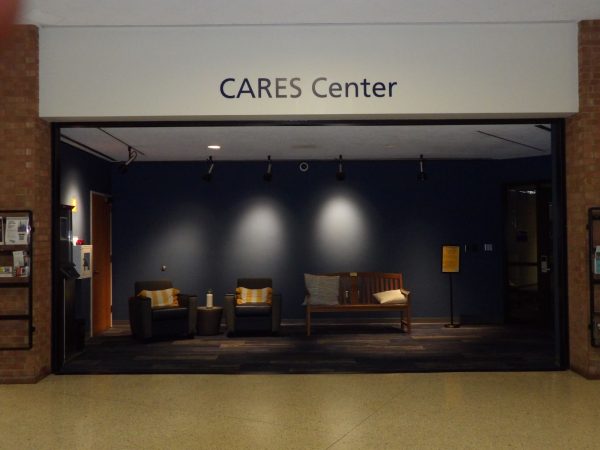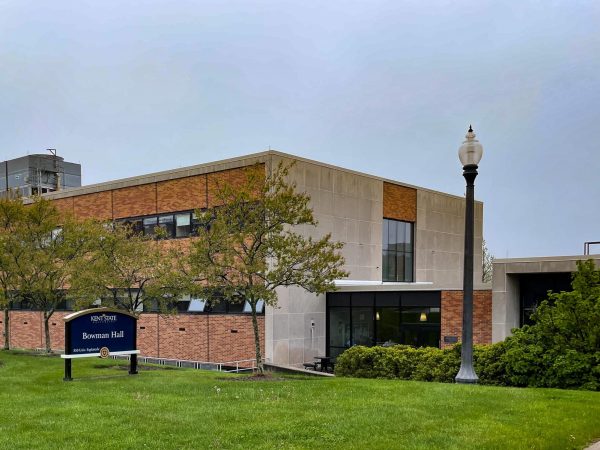National Science Foundation awards Kent State researchers
August 26, 2014
The National Science Foundation recently awarded Kent State researchers $4 million in grant money.
Nearly $2.5 million will fund faculty members’ research in biology, physics and the science of liquid crystals over the next three years, and more than $1.5 million will fund projects that will increase knowledge of liquid crystals.
“Our research strengths at Kent State benefit students, giving them first-hand experience in the lab with our faculty experts and preparing them for careers in which they can carry forward discoveries in science and technology,” Vice President for Research at Kent State Grant McGimpsey said in a university press release. “The success of our faculty in obtaining awards in this competitive funding environment is an indicator of the high quality of their work and its potential impact on society.”
Faculty members will use the grant money to conduct research projects for undergraduate and graduate students as well as fuel research internships, science fairs and Upward Bound college preparation through outreach to high school students.
Robin Selinger, professor of chemical physics and member of the Liquid Crystal Institute at Kent State, and Jonathan Selinger, professor of chemical physics and Ohio Eminent Scholar at Kent State’s Liquid Crystal Institute, received $375,000 for their research.
The pair studies responsive liquid crystal polymers, which have potential applications in robotics, touch displays, biomedical devices and more.
“Outreach activities, while they’re not the central focus of the grant, are very much a part of it,” Selinger said. “The central focus of the grant is the science research and most of the money gets spent on graduate materials and supplies and conference travel.”
Selinger said obtaining grant funds is competitive and involves an especially particular process. In order to apply for a grant, faculty must submit a proposal to NSF that includes a 15-page narrative of all the planned research activities, a one-page summary, a budget and copies of the résumé of the curriculum vitae.
“One of the things that the staff do in the Sponsored Programs Office is help us ensure that we have followed every rule, we have jumped through every hoop, and we have met every requirement associated with the required elements of the proposal,” Selinger said. “So they are fantastic and deserve praise for their incredible hard work.”
Staff within the Sponsored Programs Office helps research faculty write the budget that spells out exactly how the grant money will be spent. However, those applying for the grant write the science portion of the proposal.
Barry Dunietz, an assistant chemistry professor, received $326,000 for his research project, which he hopes will uncover ways to improve solar cell efficiency.
Trustees Research Professor Oleg Lavrentovich received $460,000 from the $2.5 million NSF grant to continue his liquid crystal research. He received $347,000 from the $1.5 million NSF grant to mathematically describe the behavior of liquid crystals under suspension.
Kent State houses the world’s most comprehensive research and educational activities in the liquid crystals field. More than $1.5 million will fund research in liquid crystals that has led to major breakthroughs in the past, Lavrentovich said. The grant money will now fund further development in new technologies.
He said his award will fund graduate students’ work on the project, and some portion of the money is set aside for purchase of materials, optical components, paying publication charges and more.
“Students working on the project will be exposed to the cutting-edge research that would help them to remain at the forefront of modern science and technology,” Lavrentovich said. “One of the students participating in the discovery of twist-bend nematic, recently received a job offer and plans to join Apple, Inc. as soon as he defends his Ph.D. thesis, presumably in six to seven weeks.”
Chemistry and Biochemistry Professor Robert Twieg received $500,000 to target toxic agents in liquid crystals in a collaborative project with Wisconsin-Madison University.
Physics Professor Satyendra Kumar received $385,000 and is studying new types of liquid crystals that will provide faster switching and higher contrast in current LCDs with the NSF’s U.S. Ireland R & D Partnership Program.
“We are very pleased to receive this award from the NSF to work on this exciting international project, especially when research funding is becoming very difficult to secure,” Kumar said in a press release.
Associate Professor Qihuo Wei and Selinger received $300,000 to research what is known as “auto-origami.” Their studies at the atomic level are meant to find how to make 3D microstructures out of shape-changing liquid crystal polymers that fold spontaneously.
Projects and research involving liquid crystals have led to major developments in technology and new projects promote keeping an understanding of liquid crystals that could lead to more breakthroughs in materials for medicine, sensing devices and communications.
Contact Rachel Sluss at [email protected].























